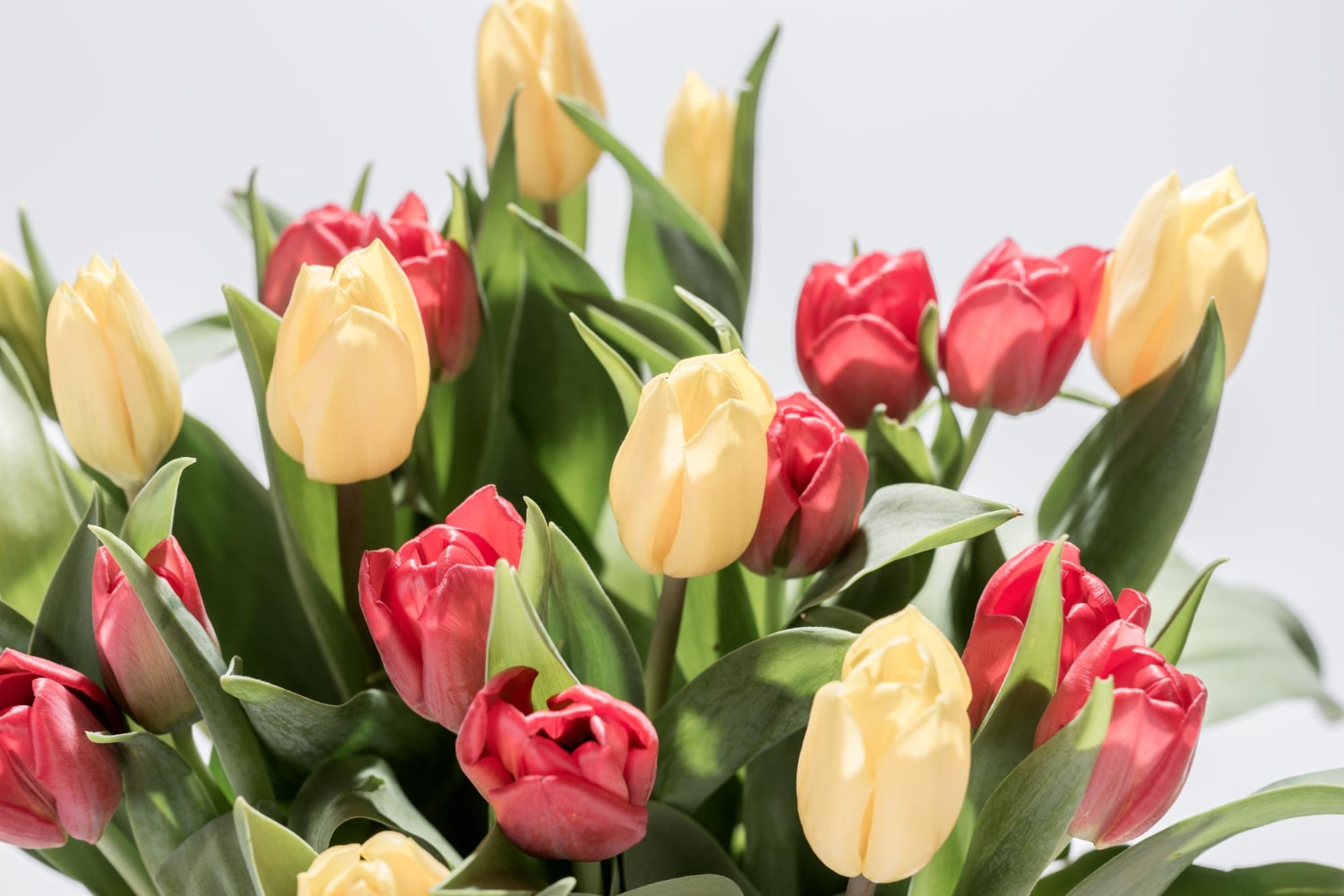Tulips are among the most beloved flowers in the world, long regarded as a symbol of beauty, love, and spring. They decorate gardens, parks, and bouquets, bringing people joy and aesthetic pleasure. The history of these flowers stretches back thousands of years, and their popularity spread not only across the East but also the West, becoming a true cultural phenomenon. Fascinating facts about tulips concern their origins, cultivation, history, and significance in art. You might not know that tulips have been the cause of economic booms and even crises, while their diversity continues to astonish.
- Tulips originate from Central Asia, particularly from the territories of present-day Kazakhstan, Iran, and Afghanistan. It was there that they were first domesticated and used as ornamental plants. Later, they were brought to Turkey, where they gained special importance.
- In Turkey, tulips became a symbol of the Ottoman Empire. They were depicted on ceramics, carpets, and clothing, and were widely planted in palace gardens. Turkish culture even experienced a “Tulip Era,” when these flowers represented luxury and harmony.
- Tulips reached Europe in the sixteenth century thanks to the Austrian diplomat Ogier de Busbecq. He brought bulbs from Turkey to Vienna, and later the flowers spread in the Netherlands. It was the Dutch who turned tulips into the true symbol of their country.
- In the seventeenth century, the Netherlands experienced a phenomenon known as “tulip mania.” Bulbs of rare varieties cost more than houses, and trading them resembled today’s stock market. Eventually, this boom ended in an economic crisis, becoming one of the first examples of a financial bubble.
- Today, there are more than 3000 tulip varieties in the world, divided into 15 classes. Among them are early, late, fringed, multi-flowered, and even peony-like varieties. This incredible diversity makes it possible to create stunning floral arrangements.
- Tulips exist in almost every color except blue. Breeders have created white, red, yellow, pink, black, and even greenish shades. Attempts to develop a rich blue tulip are still ongoing, but this task remains challenging.
- The symbolism of tulip colors is very diverse. Red tulips are associated with love and passion, yellow with joy and sunlight, white with purity, and black with mystery. That is why tulips are often given for different life occasions.
- In the Netherlands, National Tulip Day is celebrated every year. During this event, a square in Amsterdam is covered with hundreds of thousands of flowers, and anyone can pick a bouquet for free. This colorful celebration attracts tourists from all over the world.
- The Netherlands remains the world’s leading exporter of tulips. Every year the country grows billions of bulbs, which are shipped to dozens of countries. The flower industry brings enormous revenue and supports the economy.
- Tulips can be grown not only in open soil but also in pots. This allows people to enjoy their blooming even in urban apartments. Modern techniques make it possible to force tulips to bloom at any time of year.
- Tulip flowers always turn toward the sun. If you place a bouquet in a room, after a few hours you can notice that the flowers have shifted toward the light. This phenomenon makes them appear especially lively and dynamic.
- Tulip bulbs are edible. During World War II in the Netherlands, people ate them because of famine. Although their taste was bitter, they saved many lives in difficult times.
- Numerous works of art have been dedicated to tulips. Dutch painters of the Golden Age often portrayed them in still lifes. They symbolized not only beauty but also the transience of life.
- Tulips can bloom for up to three weeks, depending on the variety and conditions. They prefer sunlight and cool climates. This is why they grow best in countries with mild springs.
- Wild tulips still exist and can be found in the mountains of Central Asia. They are much smaller than cultivated varieties and have simpler shapes. These plants became the foundation for modern tulip varieties.
- Tulips are widely used in urban landscaping. They are planted in parks, flowerbeds, and along roads, creating colorful carpets. Mass plantings give cities a unique spring character.
- In some cultures, tulips are symbols of wealth and prosperity. They are considered flowers of harmony and happiness. This explains why they are so popular in wedding bouquets.
- Tulips have become the subject of scientific research in genetics and breeding. Scientists strive to develop new varieties with unusual colors and shapes. This keeps tulips relevant even in modern science.
- Around the world, there are botanical gardens specializing in tulips. They feature hundreds of varieties, including rare and ancient ones. These gardens attract both botanists and ordinary visitors.
- Tulips have become a distinctive symbol of the Netherlands. Fields covered with colorful rows of flowers appear in millions of tourist photographs every year. It is one of the most recognizable images of the country worldwide.
Incredible facts about tulips prove that these flowers are not just garden decorations but also a true cultural and historical phenomenon. Fascinating facts reveal their influence on art, the economy, and daily life. You might not know it, but tulips combine beauty, symbolism, and practical value, remaining among humanity’s most cherished flowers.





